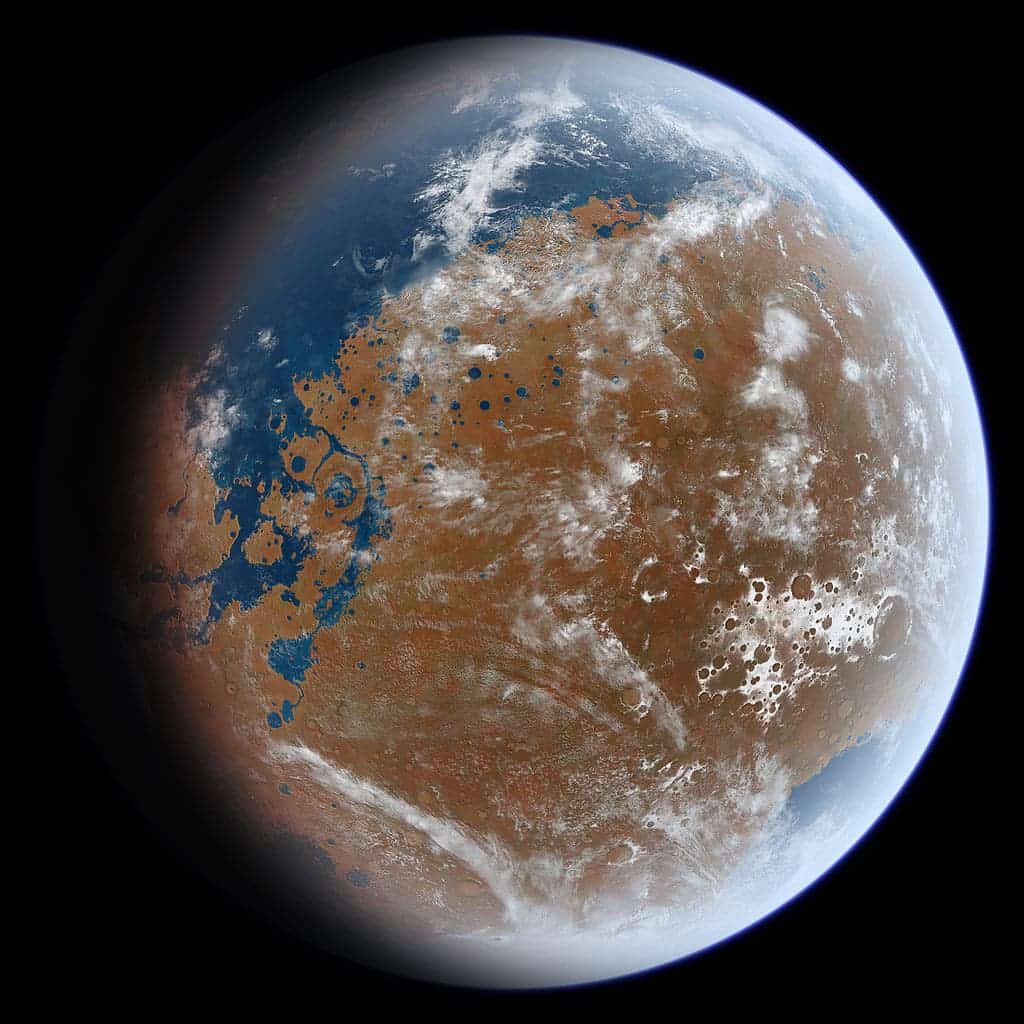Mars could be returned to its habitable glory days easier than you’d believe, NASA researchers say. All it would take is a man-made magnetic field to allow the red planet’s atmosphere to thicken and foster more Earth-like conditions.

Image credits Ittiz / Wikipedia.
Mars is a pretty desolate place. Blood red and bone dry at the same time, it’s either way too cold or much too hot depending on where you happen to be on its surface. There’s nothing good to breathe and it’s also pretty radioactive. In short, Mars isn’t much to write home about — unless you’re writing to complain about how unwelcoming it is.
But it wasn’t always like this, and it doesn’t have to stay this way. Scientists believe that Mars was once surprisingly Earth-like, with water-filled oceans and a surprisingly comfortable climate for an alien world. As the planet’s magnetic field weakened and finally collapsed billions of years ago, solar winds stripped it bare of its atmosphere leaving behind a cold and barren piece of rock.
That magnetic field is the key to NASA’s bold plan to making Mars an awesome place for future generations of human colonists.
Is it a bird? Is it a plane? It’s a magnet!
NASA simulations show that a powerful-enough magnetic shield propped up into space between the Sun and Mars could push away solar winds and allow the red planet to naturally regrow its atmosphere.
The results were presented at the Planetary Science Vision 2050 Workshop last week, when Planetary Science Division director Jim Green said anchoring an “artificial magnetosphere” into space between Mars and the Sun should shield the planet in the magneto-tail (a teardrop-like shape or magnetic ‘wake’) that trails behind this protective field.
“This situation then eliminates many of the solar wind erosion processes that occur with the planet’s ionosphere and upper atmosphere allowing the Martian atmosphere to grow in pressure and temperature over time,” the researchers explain in an accompanying paper.
“Much like Earth, an enhanced atmosphere would: allow larger landed mass of equipment to the surface, shield against most cosmic and solar particle radiation, extend the ability for oxygen extraction, and provide ‘open air’ green-houses to exist for plant production, just to name a few,” they said during the presentation.
It would take surprisingly little time, too. Their figures show that in the absence of solar wind erosion, Mars’ atmosphere would go up to as much as one half of Earth’s atmospheric pressure in a matter of years.
The team agrees that at first glance, the concept may seem “fanciful”. But they point out to existing mini-magnetosphere technologies under development to shield astronauts and spaceships from radiation during deep space missions — technology which could be scaled up to protect a whole planet.
Still, it remains a highly theoretical plan with a high potential of not-going-according-to-plan. We don’t yet have the technology to make it happen, so we got our work cut out for ourselves. It would also be a huge engineering challenge to create, maintain, and properly place these magnets on the firmament.
But we understand what needs to be done and we could probably have the means to do so in a few years. If it does work, the magnets would turn Mars from a place where we’d need domed cities to Earth-like conditions in a few generations. That’s a huge payoff — a whole world’s worth of payoffs.
“It may be feasible that we can get up to these higher field strengths that are necessary to provide that shielding. We need to be able then to also modify that direction of the magnetic field so that it always pushes the solar wind away,” Green said.
“This is not terraforming as you may think of it where we actually artificially change the climate, but we let nature do it, and we do that based on the physics we know today.”
The team will continue refining the idea to get a more accurate estimate of how long the climate-altering effects would take.
“If this can be achieved in a lifetime, the colonisation of Mars would not be far away.”
The findings were presented at the Planetary Science Vision 2050 Workshop.






